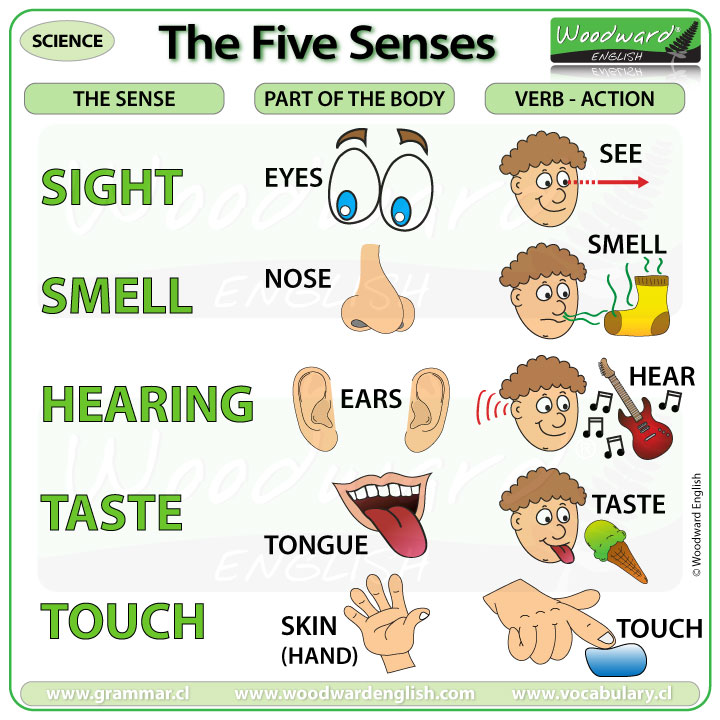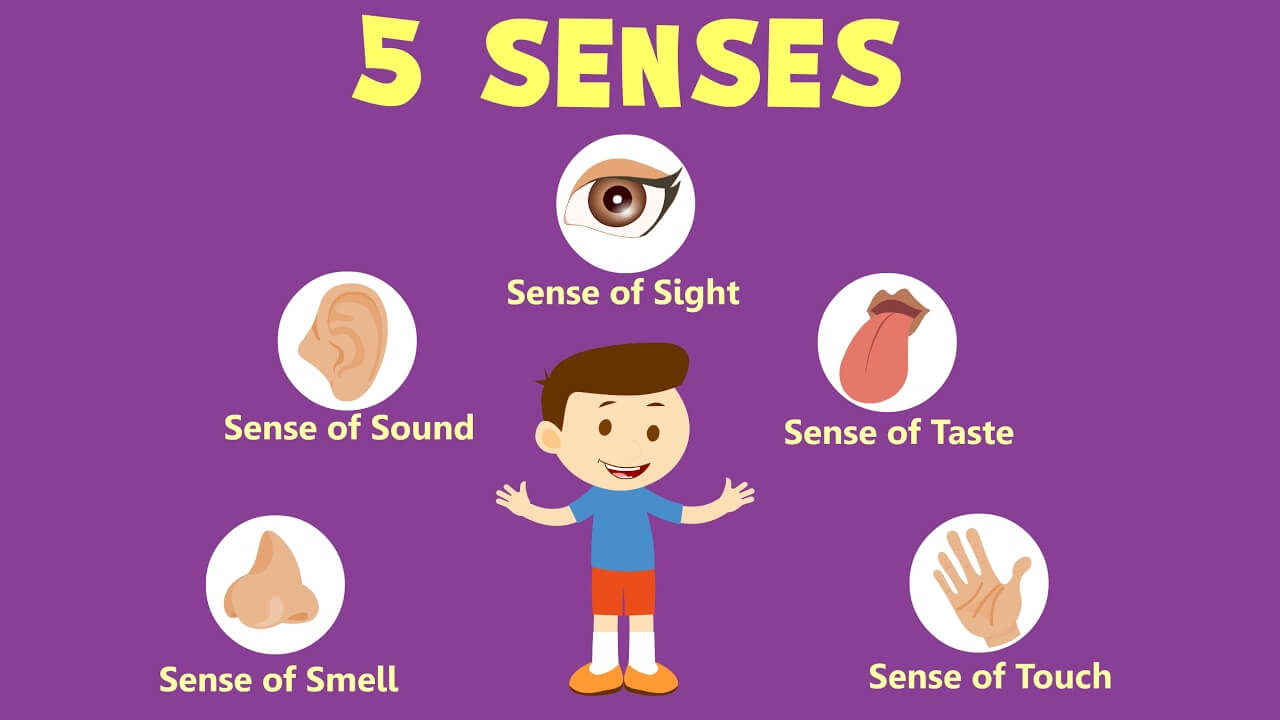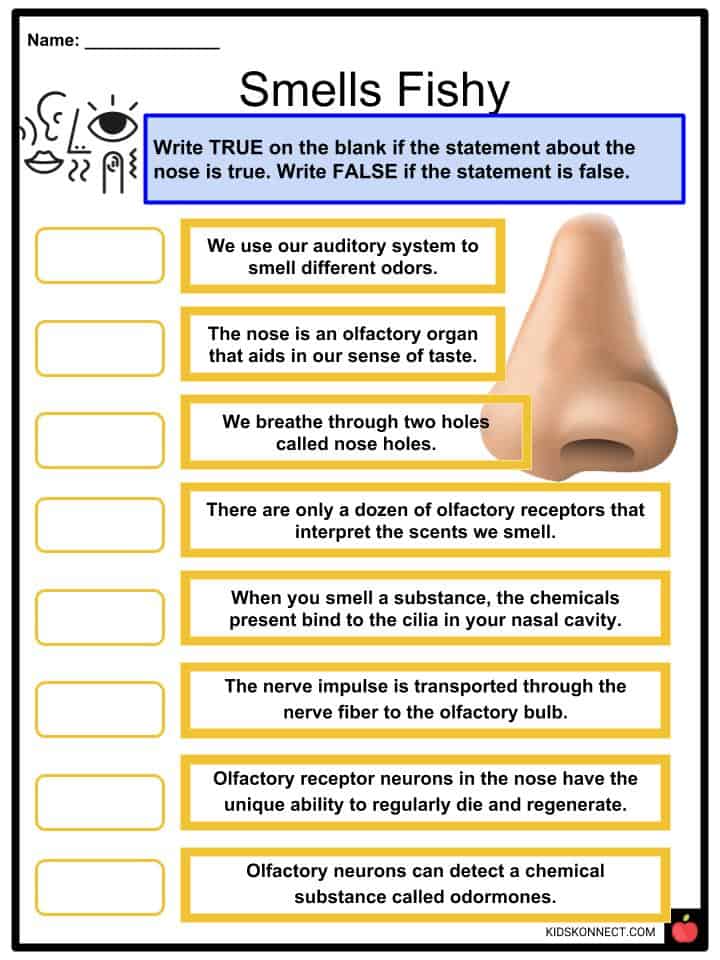
Sense Organs II Learn about five senses II Human Sense Organs II Ku Koo Tv Kids YouTube
Nerves relay the signals to the brain, which interprets them as sight (vision), sound (hearing), smell (olfaction), taste (gustation), and touch (tactile perception). 1. The Eyes Translate Light into Image Signals for the Brain to Process. The eyes sit in the orbits of the skull, protected by bone and fat. The white part of the eye is the sclera.

Sense Sense Organs five sense organs name For kids learning YouTube
The five senses of the body are sight, sound, smell, taste, and touch. The five senses of humans are perceived through the use of sensory organs. These sensory organs include eyes for sight, ears.

Trace the letters Sense of Organs Worksheet Senses preschool, Sense organs chart, Worksheets
Ears. Eyes. Nose. Tongue. Skin. These classic five sensory organs help in perceiving sound, light, smell, taste, and touch, respectively. Receptors present in the sense organs can transmit a signal to a sensory nerve, and these are classified into two, namely- general receptors and special receptors.

HOW TO DRAW SENSE ORGANS EASILY HUMAN SENSE ORGANS MODEL SCHOOL PROJECT SCIENCE PROJECT
Yes, sense organs can be affected by various factors such as age, diseases, injuries, or genetic conditions. Impairments or disorders in sense organs can impact our sensory perception and may require medical attention or assistive devices. The 5 sense organs (Eyes, Ears, Nose, Tongue, Skin) allow us to see, hear, smell, taste, and touch.

The Five Senses Woodward English
Five Sense Organs Name. The five sense organs are the eyes, ears, nose, tongue, and skin. 5 Sense organs are specialized organs that aid in our perception of the world around us and are an important part of our daily life. They are the only means by which we may comprehend our surroundings. Sense organs give the necessary info, which is then.

Human sense organs/5 sense organs/sense organs and their functions/sense organs for
The classic five senses are sight, smell, hearing, taste, and touch. Sensory organs that helps us to do these things are the eyes, nose, ears, tongue, and skin. The sensing organs associated with each sense send information to the brain to help us understand and perceive the world around us. People also have other senses in addition to the.

5 sense organs EVS Class II YouTube
1 SENSE ORGANS HANDOUT Sensory Receptors - receive input, generate receptor potentials and with enough summation, generate action potentials in the neurons they are part of or synapse with 5 Types of Sensory Receptors - based on the type of stimuli they detect: 1. Mechanoreceptors - pressure receptors, stretch receptors, and specialized mechanoreceptors involved

Sense organs/Function of the sense organs. YouTube
Sense Organs For Class 2. Displaying all worksheets related to - Sense Organs For Class 2. Worksheets are 0010 five senses work, Sense organs handout, K to grade 2 human body series the five senses, Sense organs, Five senses, Special senses introduction activity 1 observation of the, Human body, Class i summative assessment i question bank 1.

Sense Organs Grade 2 YouTube
Sense Organs for Class 2 Science. In this concept, the students will learn about sense organs. They will also get an idea about the five sense organs and their functions. After reading the concept, students will be able to: Understand how the sense organs in the human body help in body coordination and movement.

List of Sense Organs and their Functions
Description. Traditionally, there are five sense organs that respond to external stimuli and, in turn, relay information to the central nervous system. These include the eyes (vision), nose (olfactory organ for smell), ears (vestibulocochlear organ for hearing and balance), tongue (gustatory organ for taste), and the integument (touch or.

How to draw Our Five Sense organs with their functions step by step l Five sense organs chart
CBSE Class 2 EVS Worksheet Answers. 1. Skin tells us if the object is hot, cold, warm, soft, rough etc. 2. Sight, hearing, sense, touch and smell are the five kinds of senses. 3. Option C. 4. Taste buds on the tongue help to enjoy the food.

Sense Organs Facts & Worksheets for Kids Types, Anatomy, Function
The Senses. The sensory division of the peripheral nervous system (PNS) includes several sense organs—the eyes, ears, mouth, nose, and skin. Each sense organ has special cells, called sensory receptors, that respond to a particular type of stimulus. For example, the nose has sensory receptors that respond to chemicals, which we perceive as odors.

Premium Vector Five senses template with human organs Sense organs chart, School activities
Quiz: Answer Key. Poster: Get Powerful from an Hour Full of Fun (color) | (black and white) Poster: How The Body Works - Heart (color) | (black and white) Poster: How The Body Works - Cardiovascular (color) | (black and white) Digestive System. Teacher's Guide.

How to draw sense organs easy Sensor organs drawing idea How to draw sensory organs YouTube
These senses govern our association and our interaction with the environment. We have five sense organs, namely: Eyes. Ears. Nose. Tongue. Skin. These five sense organs contain receptors that relay information through the sensory neurons to the appropriate places within the nervous system.

Sense Organs Science Basics For Kids Learn about five Senses Pre 2 Advance YouTube
2. Displays the chart showing five (5) sense Organs. 3. Lets pupils identify each sense organ. Pupil's Activities - Identify each of the sense organs. 4. Asks them to touch nose, skin, ears, raise their hands and show their tongue. Pupil's Activities - Identify and name the sense organ. 5.

Our sense organs EVS ( Class 1 &2) Human sense of organs and their Functions for kids
Sense Organs Chart - Displaying top 8 worksheets found for this concept. Some of the worksheets for this concept are 0010 five senses work, K to grade 2 human body series the five senses, Sense organs, Kfive senses, Students work, Five senses student work, Sense chart, Chapter 6 special sensory organs eye and ear.